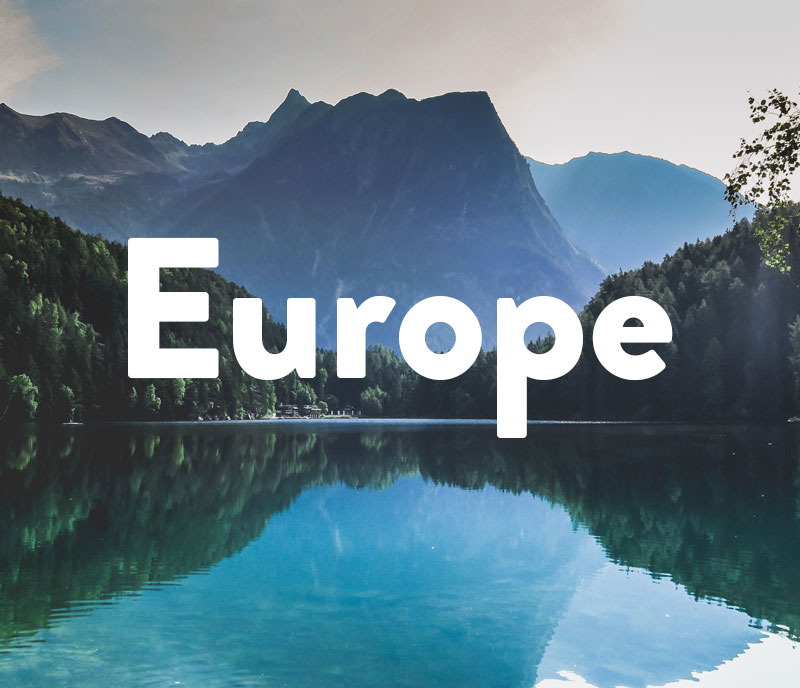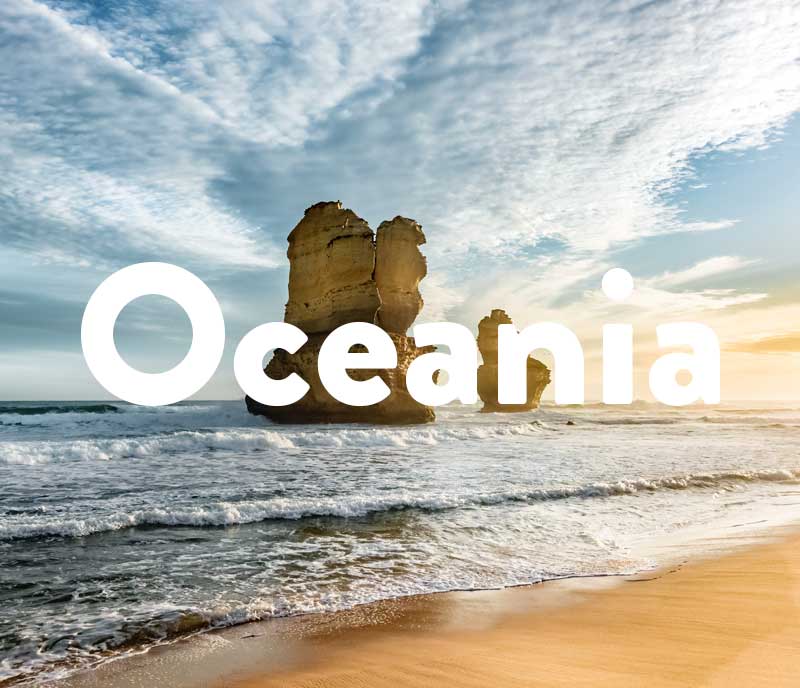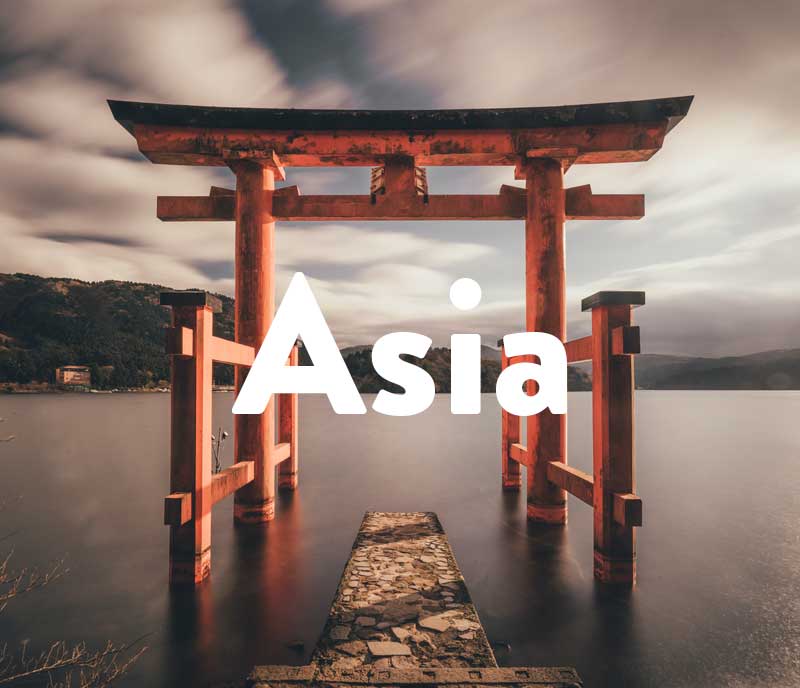Chile is a slender country with just 240 kilometers across at its widest point. But don’t let its size fool you!
From the snowy volcanoes of Patagonia and blistering heights of the Andes to world-class wineries and Maoi sculptures of Easter Island, there are a lot of wonderful things to see in Chile.
Chile is nature on a colossal scale, but traveling through the country is easier that you might expect. It’s one of the most developed countries in South American and a tech hub for the region. In Chile you can enjoy modern and vibrant city life along with the most astonishing naturals wonders in one trip. Let’s get to it!
Dive into our (free) travel guides below!
.
.
.
.
.
.
.
.
The Key Info
Chile is located in the south-west of South America. It shares its northern border with Perú and Bolivia, and its eastern border with Argentina. To the south and west it is surrounded by the Pacific Ocean. It also claims a part of Antarctica as its own.
It’s capital is Santiago, although the parliament is in Valparaíso.
The main language is Spanish, spoken by over 99 % of Chileans, but minorities do speak other languages, mainly indigenous ones like quechua, aimara or Rapanui.
As for its natural environments, to the north lies the lands of Atacama desert, in the middle of the country there are regions with forests and to the south there are steppes due to the polar weather.
Chile in numbers
- Population: 19,107,216 million inhabitants
- Total size of the country: 756,102 km²
- Capital city: Santiago
- Currency: Peso Chileno
- Language: Spanish
- Religion: Roman Catholic (67%), Protestants (16%), non-religious and others (17%)
The 5 largest cities in Chile
The largest cities in Chile according to their metropolitan area are Santiago, Concepción, Valparaíso, la Serena and Antofagasta.
# 1 Santiago
Chile’s capital, Santiago is home to over 6 million people, and it is considered one of the most developed cities in South America.
The city features highlights such as the Centro Cultural Palacio La Moneda and the Chilean National Museum of Fine Arts. And no visit to Santiago would be completed without taking the aerial tramway to San Cristóbal Hill for its stunning views over the city.
Centrally located and the country’s main transportation hub, Santiago is also an excellent base for trips out to vineyards, the Andes, to the beaches of Viña del Mar or to Valparaiso.
# 2 Concepción
Concepción is located in the South of Chile and it has 970,000 residents.
It is known for its cultural life, being of importance its artistic patrimony: museums, murals, etc. It has amazing natural surroundings and there are several natural landmarks like Cerro Caracol and the rivers Andalien and Bio Bio.
# 3 Valparaíso
Valparaíso is Chile’s third largest city, home to over 950,000 people. It is located between the sea and the coastal mountain range, about 112 kilometers northwest of Santiago.
This city is as popular for its many old cobbled streets and unique architecture as for its lovely harbor and beaches. Many tourist attractions focus on the country’s maritime heritage, like the Lord Cochrane’s Museum and the Naval and Maritime Museum.
# 4 La Serena
La Serena is almost 500 kilometers north of Santiago and has almost half a million inhabitants.
This city is a very popular summer destinations, where its beaches are appreciated all around the country. But it also offers a historical center with lots of neocolonial architecture and aristocratic houses.
# 5 Antofagasta
Antofagasta is the biggest city in the north of the country, housing 360,000 people.
It is a great place for exploring all the wonders in the north, but without forgetting what the city itself has to offer: the ruins of Huanchaca, the natural wonder of La Portada, or the famous sculpture of Mano del Desierto!
TOP Tourist Attractions
# 1 Torres Del Paine National Park
Torres del Paine National Park lies more than 100 kilometers north of the city of Puerto Natales, in southern Patagonia. This stunning area encompasses mountains, glaciers, and countless lakes and rivers. Although the most notable of its many wonderful features are the three 2,850-meter-tall granite peaks of the Paine Massif, which dominate this already breathtaking scenery. Hiking is the most popular activity in the park, offering multi-day treks that circle the mountains.
# 2 Valle de la Luna and the Atacama Desert
Valle de la Luna (Moon Valley) lies 13 kilometers west of San Pedro de Atacama at the north end of the country. This place is the heart of the Atacama Desert. Among its most interesting features are its dry lake beds, and the region’s many caverns, some containing evidence of pictographs created by early man. It’s also where some of the world’s oldest mummies have been found.
# 3 Isla de Pascua (Easter Island)
It lies 3,500 kilometers away from mainland Chile. This fascinating island, declared a World Heritage Site, with its remarkable stone sculptures, known as Moai, remains the country’s most recognizable attraction. The most impressive collection is at Ahu Tongariki where 15 of them have been re-erected on the island’s largest Moai platform.
Also of interest are the many ruins near ahu sites consisting of stones that once formed the foundation of boat-shaped houses. Another interesting place to visit is Father Sebastian Englert Anthropological Museum, which exhibits the history of the Polynesian islanders and their traditions.
# 4 Chiloé
Chiloé archipelago is known for a number of unique churches that boast a particular architectural style called Chilota, born from the mix of aboriginal and European Jesuit influence. The Island also offers beautiful villages surrounded by pristine forests and white sand beaches.
# 5 Región de los Lagos
This region of Andean foothills has rich farmland at the base of its many snowcapped volcanoes, ringed by thick forests and the kind of deep lakes that water sports enthusiasts drool over. If you are looking for adventure, the area offers hiking and biking activities, along with other fun activities such as volcano climbing, rafting or kayaking.
Best time to travel
When to travel depends on the region you are travelling to. If you are planning on visiting Patagonia, October to March are the warmest months. If you want to check out Santiago, the Central Valleys, and the Atacama Desert you’re in luck – they are year-round destinations. June to August are popular for skiers in the mountains around Santiago and April is great to enjoy the displays of autumnal leaves in Chile’s winelands.
Holidays in Chile
- January 1: New Year
- January 7: Epiphany Holiday
- Holy week: March-April
- May 1: Labor Day
- May 21: Navy day
- June 29 : Saint Peter and Saint Paul
- July 16: Our Lady of Mount Carmel
- August 7: Battle of Bocaya (a decisive battle in the Colombian independence war)
- August 15: Assumption of Mary
- September 18: Independence Day
- September 19: Army Day
- September 20: National Day
- October 12: Columbus Day
- October 31: Reformation Day
- November 1: All Saint’s Day
- December 8: Immaculate Conception
- December 25: Christmas Day
Do I Need a Visa?
Both United States of America’s citizens and Europeans Union citizens with a valid Schengen passport do not need tourist visas to enter the country.
Canada, South Corea, Japan also have no visa requirements. Australians must pay a reciprocity fee. And most of South American citizens can enter Chile with just a valid ID.
Chilean Currency
The national currency is the Peso Chileno (CLP). Banknotes are available at 1000, 2000, 5000, 10 000 and 20 000. Coins go from 10, 50, 100 to 500 pesos.
Money / Credit Cards: Credit cards are of common use in the main cities, so there should be no problem paying with them. Although when travelling outside of major cities, it is a good idea to pack enough cash.
Dos and Don’ts in Chile
Brazil, as any other country has its rules and practices that you need to know when travelling there to avoid feeling uncomfortable or even being disrespectful.
| Dos | Don’ts |
| Tip. It is customary to leave at least a 10% tip, called “propina” for people working in restaurant and bars make very little. | Smoke or make fires in the national parks. They want to preserve their astonishing landscapes. Who can blame them! |
| Shake hands making eye contact is the customary greeting.Bring a gift for the host if you are invited to a house. Wine is always a good idea, but make sure is Chilean. | Hand salt to a Chilean. Yeah, really. They are superstitious about it. Just place it on the table next to them. |
| Use sunscreen. Southern Chile lies underneath an ozone hole where dangerous sun rays penetrate through the atmosphere. | Say no. They really don’t like that word. If you need to, just use your diplomacy skills to pass on whatever it was offered to you. |
| Bring a gift for the host if you are invited to a house. Wine is always a good idea, but make sure is Chilean. |
Must-Haves for Your Chile Packing List!
Chile’s length and varying climates makes it difficult to pack. But you will always need these items:
- Rainwear or waterproof clothing. Oh, and an umbrella.
- Warm clothes. The weather tends to change.
- Comfortable boots or walking shoes.
- The standard voltage in Chile is 220 V and the standard frequency is 50 Hz. Power plugs and sockets are of type C and L.
- If you are planning on hiking, get yourself a good (and not too big) backpack. 40 litters should be enough.
Secret tips from bloggers worldwide
- Santa Cruz in the Colchagua Valley: If you like wine, you’d love this place. – Global Introvert
- Catedrales de Mármol: cathedral-like structures made of rocks. – El Mundo A Nuestros Pies
TOP Instagrammable Places in Chile
- #skycostanera (130k posts)
- #torresdelpaine (507k posts)
- #patagonia (5M posts)
- #cerrosancristobal (193k posts)
- #valledelaluna (148k posts)
- #atacamadesert (221k posts)
- #easterisland (257k posts)
Fun Facts About Chile
Did you know…?
Chile is the longest country in the world from north to south at 2669 kilometers.
Puerto Williams, in Chile, is the southernmost village in the world.
Chile is home to the largest swimming pools on Earth.
Not done yet?
- Dresden and Saxon Switzerland – The perfect weekend trip
- Vacation in Carinthia: Experience the sunny side of the Austrian Alps
- Craft Unforgettable Postcards: Say Goodbye to Writer’s Block with AI (Coming soon!)
- Discovering the Charm of San Antonio: 5 Hidden Must-Visit Places
- Off to a Texas adventure: Our trip to San Antonio, Fredericksburg and Bandera – Part 2







